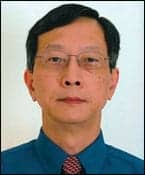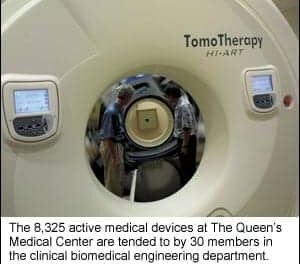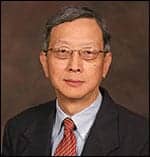 |
I was very surprised by what was proposed in the June Soapbox article, “A Legacy of Safety,” particularly because it was authored by well-known and respected colleagues. While I appreciate them reminding us that safety is the responsibility of everyone in health care, I cannot agree that safety is our “real goal.”
Don’t get me wrong, safety is important but it is not the only goal we have. Like managers of airlines or amusement parks, safety is paramount to our customers, but it is not the only thing we do. Proper management and maintenance of equipment is critical to ensure that passengers get where they want to go, visitors enjoy their amusement park rides, and patients get cared for in the safest and most efficacious manner possible.
Their article reminds me of the 1970s when Ralph Nader claimed (erroneously) that thousands of patients were electrocuted by faulty clinical equipment. It appears the authors are suggesting that we look for another high-profile issue to hitch our wagons to, hoping to gain more attention of hospital administrators.
It took more than 2 decades for us to free ourselves from the electrical (and other kinds of) safety paranoia to finally understand what our profession is about: the management of medical equipment “from cradle to grave.” Using our technical knowledge and analytical skills, we play an instrumental role in the proper planning, incorporation, utilization, support, and retirement of technology in health care organizations. Maintenance is our bread and butter, not only because of its volume and impact on the organizations’ care processes and bottom lines, but also because it provides the data vital for us to evaluate and improve our management processes (ie, evidence-based maintenance).
Another example of the tunnel vision created by the safety myopia in the early days of CE is the risk-based inclusion criteria. That criteria ignored the risk of not having mission-critical diagnostic equipment, such as CT scanners and automated clinical chemistry analyzers, available for clinicians to decide on the best treatment for dozens of patients, thereby jeopardizing their health and lives. Actually, Larry Fennigkoh, PhD, PE, CCE, never intended his model to be focused only on risk.
Equipment maintenance is not sexy or fashionable, but is vital to ensure that patients get the care they need. We should be proud of providing such an important service to our society, even though very few people are aware of its importance or even our existence. The fact that data from both the FDA and The Joint Commission show very few patient incidents can be traced back to equipment failures and, much rarer even, to maintenance deficiencies, attest to our success. Within each hospital, we seem insignificant (~0.5% of total staff and budget). However, as an industry, we are not negligible. Currently, there are probably 20,000 CE professionals in the United States, and the entire CE industry is valued at more than $3 billion per year.
It would be foolish for us to abandon our main duties to chase the latest fad. We do not have the training or expertise to work as risk managers or safety specialists. Both have their own professional societies, education programs, and certification processes. Most CE departments are not even qualified to apply risk or safety tools in analyzing their own activities—maintenance errors are probably just as prevalent as equipment use errors, for example. I obviously have nothing against colleagues who want to learn more about those tools and use them to assist our clinical colleagues, or even switch to those professions. However, I do not believe everyone should start claiming to be an “equipment safety specialist,” much less changing their department names to “medical equipment risk management programs.”
So let us go out and tell our clinical colleagues and the patients that we are proud of who we are—CE professionals—and of what we do—making sure that the clinicians have the tools they need in safe, good working condition to care for the patients. If someone is not happy with what he/she does or is called, politely suggest to them to consider changing professions.
Binseng Wang, ScD, CCE, FAIMBE, FACCE, is senior director, program support and quality assurance, ARAMARK Healthcare’s Clinical Technology Services, Charlotte, NC. For more information, contact .





